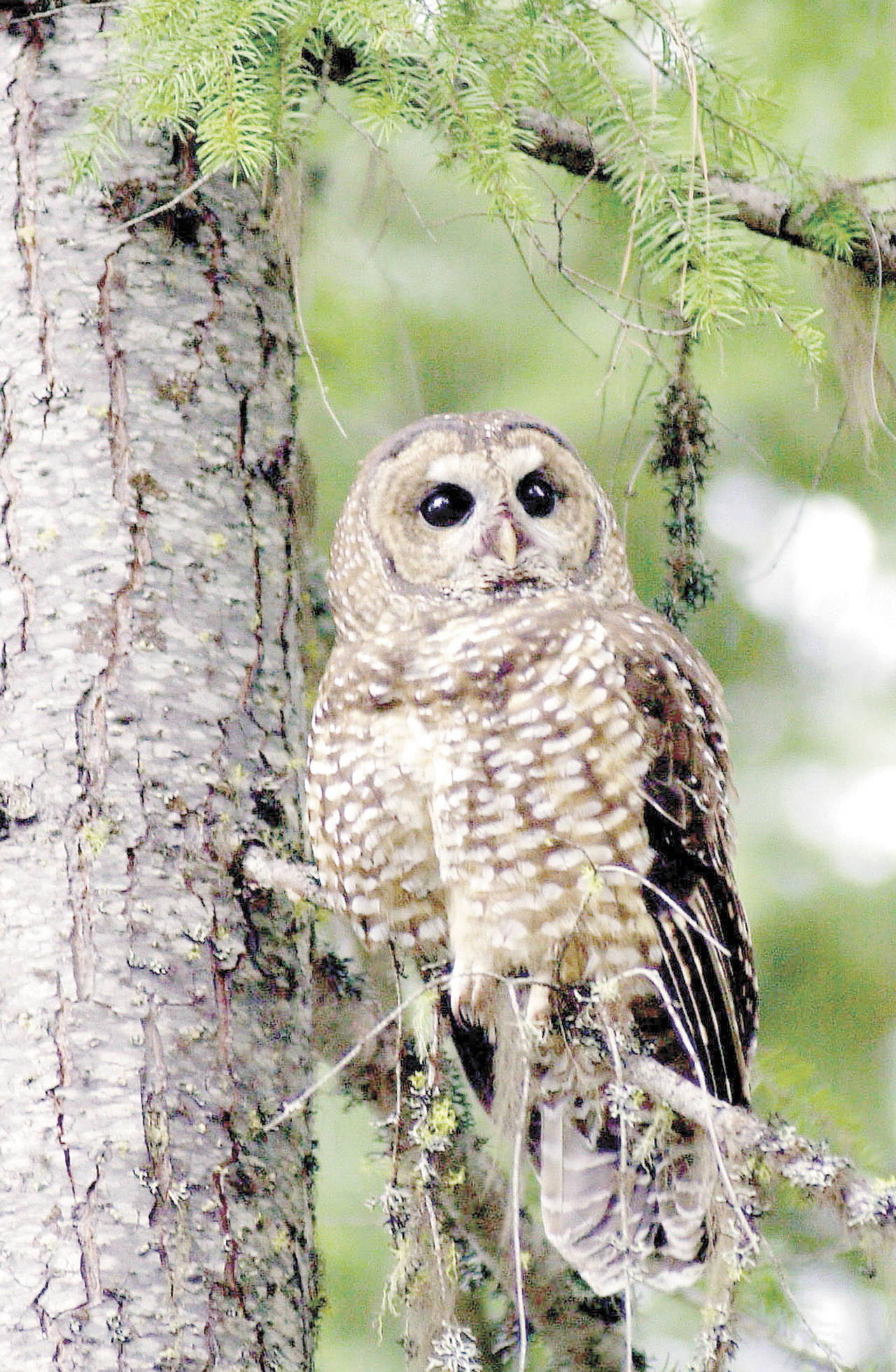By Michael Doyle
McClatchy Washington Bureau
WASHINGTON, D.C. — A top federal appeals court has added fuel to a long-running fight over federal protections for the northern spotted owl in California, Oregon and Washington state.
In a unanimous decision Tuesday, the U.S. Court of Appeals for the District of Columbia Circuit ruled that the lumber companies united as the American Forest Resource Council have the legal standing to challenge the owl’s designated “critical habitat.” Federal officials in 2012 designated more than 9.5 million acres in the three states as essential for the owl’s survival.
“The council has demonstrated a substantial probability that the critical habitat designation will cause a decrease in the supply of timber from the designated forest lands,” Judge Brett Kavanaugh wrote, adding that there’s also evidence that “council members will suffer economic harm as a result of the decrease in the timber supply from those forest lands.”
Kavanaugh was joined in the decision by Judge Thomas Griffith, a fellow George W. Bush appointee, and by Sri Srinivasan, a judge appointed by former President Barack Obama. Though they were not ruling on the underlying merits of the Fish and Wildlife Service’s critical habitat decision, the court’s opinion vividly stressed the vast reach of the designation.
“The designated critical habitat area is roughly twice the size of the state of New Jersey,” Kavanaugh wrote. “For Easterners, imagine driving all the way up and then all the way back down the New Jersey Turnpike, and you will get a rough sense of the scope of the critical habitat designation here.”
Lawson Fite, general counsel for the Portland, Ore.-based American Forest Resource Council, said in an interview Tuesday that the organization was appreciative of the appellate decision, which moves the case back to district court. One potential outcome is the trial judge could order the Fish and Wildlife Service to draw new critical habitat maps.
“We think a lot can be addressed by making sure the rule is scientifically supported,” Fite said.
Sometimes called the nation’s second-highest court, the D.C. Circuit rules on a wide array of federal government actions. It is also a bit of a feeder to the Supreme Court, and Kavanaugh and Srinivasan have been mentioned as potential future Supreme Court nominees, depending on which party holds the White House.
Their 16-page decision issued Tuesday could spotlight, moreover, some of the public-lands challenges facing the Trump administration, which essentially inherited the Fish and Wildlife Service’s prior actions to protect the northern spotted owl. While the lawsuit names Interior Secretary Ryan Zinke as defendant, the former Montana congressman comes from a state where skepticism of the Endangered Species Act is widespread.
The Fish and Wildlife Service identifies the northern spotted owl as a threatened species. This triggered the need to designate its critical habitat. The 2012 designation expanded the size of several earlier designations.
This land is not a sacrosanct preserve, but federal agencies like the Forest Service or the Bureau of Land Management must consult with the Fish and Wildlife Service to ensure that actions like issuing logging permits do not destroy or harm the habitat.
Parties bringing legal challenges must show they have standing, which includes the requirement that they have suffered or are threatened with an actual injury.
Kavanaugh said “common sense” had led to the conclusion that logging must decline on lands for which critical-habitat-consultation requirements apply.
“The critical habitat designation means that a huge swath of forest lands in the Pacific Northwest will be substantially off-limits for timber harvesting,” Kavanaugh wrote.



